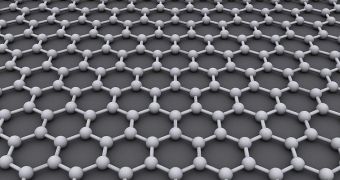Graphene, the material made of carbon atoms set in hexagonal molecules, and which is seen as the holy grail of semiconductors of all kinds, continues to be one of the main topics of discussion among tech researchers.
Scientists from the Massachusetts Institute of Technology have been in the thick of graphene research from the onset.
However, the newest milestone they reached was accomplished during a collaboration with researchers from Harvard.
The point of the latest tests was to find a way to simplify the placement of circuits on the material.
Previously, each circuit had to be placed individually, through a delicate process.
Obviously, having to do something with a high chance of failure is not good when the chips are supposed to be mass-produced.
Fortunately, as reported by MIT News, a solution has been found, one that allows complicated designs, like English alphabet letters, to be molded.
DNA provided the answer. Models out of DNA, which are easily moldable, proved small enough to work with graphene.
Thus, researchers can finally start designing possible circuits for the material, since they don't have the problem of lack of efficiency anymore, and can use pre-made templates.
It's not the end of preparations, but it does bring graphene a step closer to enabling the new age of GPUs, flash/volatile memory, etc.
“This gives us a chemical tool to program shapes and patterns at the nanometer scale, forming electronic circuits, for example,” says Michael Strano, a professor of chemical engineering at MIT and a senior author of a paper describing the technique in the April 9 issue of Nature Communications.
“The work shows the potential of self-assembled metallized DNA nanoarchitectures as lithographic masks for wafer-scale patterning of graphene-based electronic circuit elements. I believe that this approach will stimulate further research on the application of nanopatterning techniques in graphene-based nanoelectronics,” says Robert Haddon, a professor of chemical and environmental engineering at the University of California at Riverside.

 14 DAY TRIAL //
14 DAY TRIAL //